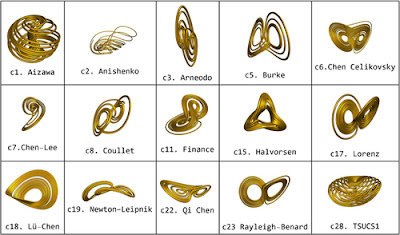I get really frustrated with science news reporting sometimes.
I mean, on the one hand, it's better that laypeople get exposed to science somehow, instead of the usual fare of the mainstream media, which is mostly stories about seriously depressing political stuff and the latest antics of celebrities. But there's a problem with science reporting, and it's the combination of a lack of depth in understanding by the reporters, and a more deliberate desire to create clickbaity headlines and suck people in.
Take, for example, the perfectly legitimate (although not universally accepted) piece of research that appeared on January 23 in Nature Geoscience, suggesting that the Earth's inner core oscillates in its rotational speed with respect to the rest of the planet -- first going a little faster, then slowing a bit until its rotational rate matches Earth's angular velocity, then slowing further so the rest of the planet for a time outruns the core. Then it speeds up, and does the whole thing in reverse. The reason -- again, if it actually happens, which is still a matter of discussion amongst the experts -- is that the speed-up/slowdown occurs because of a combination of friction with the outer core, the effects of the magnetic field, and the pull of gravity from the massive mantle that lies outside it.
That's not how this story got reported, though. I've now seen it several times in different mainstream media, and universally, they claim that what's happening is that the inner core has stopped, and started to spin the other way -- i.e. the inner core is now rotating once a day, but in the opposite direction from the rest of the Earth.
This is flat-out impossible. Let's start with the fact that the inner core has a mass of about 110,000,000,000,000,000,000,000 kilograms. A mass that huge, spinning on its axis once a day, has a stupendous amount of angular momentum. To stop the rotation of that humongous ball of nickel and iron would take an unimaginable amount of torque, and that's not even counting overcoming the drag that would be exerted by the outer core as you tried to make the inner core slow down. (I could calculate how much, but it's just another huge number and in any case I don't feel like it, so suffice it to say it's "a shitload of torque.") Then, to accelerate it so it's rotating at its original rate but in the opposite direction would take that much torque again.
Where's the energy coming from to do all that?
Here, the fault partly lies with the scientists; they did use the words "reversing direction" in their press release, but what they meant was "reversing direction with respect to the motion of the rest of the Earth." I get that relative motion can be confusing to visualize -- but giving people the impression that something has stopped the inner core of the Earth and started it rotating in the opposite direction gives new meaning to "inaccurate reporting."
Worse still, I'm already seeing the woo-woos latch onto this and claim that it's a sign of the apocalypse, that the Evil Scientists™ are somehow doing this deliberately to destroy the Earth, that it's gonna make the magnetic field collapse and trigger a mass extinction, and that it's why the climate has been so bonkers lately. (Anything but blame our rampant fossil fuel use, apparently.) Notwithstanding that if you read the actual paper, you'll find that (1) whatever this phenomenon is, it's been going on for ages, (2) it represents a really small shift in the inner core's angular velocity, and (3) it probably won't have any major effects on we ordinary human beings. After all, (4) the scientists have only recently figured out it's happening, and (5) not all of them believe it is happening.
So let's just all calm down a bit, okay?
In any case, I'd really appreciate it if the people reporting science stories in the mainstream media would actually read the damn papers they're reporting on. It'd make the job of us skeptics a hell of a lot easier. Thanks bunches.













